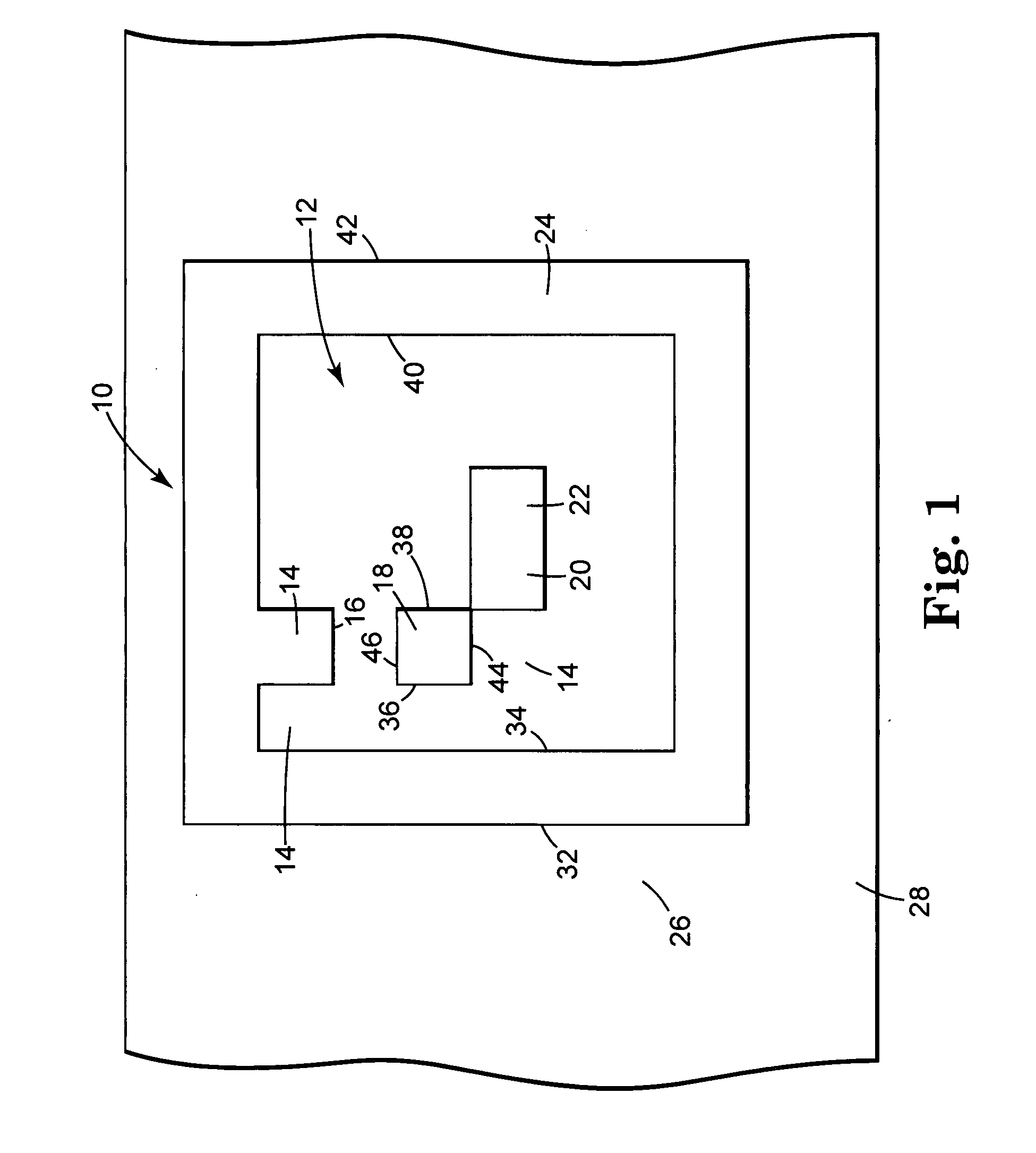Multi-dimensional symbologies and related methods
a multi-dimensional symbology and symbology technology, applied in the field of multi-dimensional matrix coding technology, can solve the problems of system failure and abandonment, increased code data both difficult to create and print, and difficult to read and extract information, etc., to improve the ability, correct optical distortion, and facilitate the effect of finding and identifying
- Summary
- Abstract
- Description
- Claims
- Application Information
AI Technical Summary
Benefits of technology
Problems solved by technology
Method used
Image
Examples
Embodiment Construction
[0033] Area symbologies are well known, such as are described in U.S. Pat. No. 5,612,524, U.S. Pat. No. 4,972,475, and U.S. Pat. No. 4,924,078, the entire disclosures of which are incorporated herein by reference for all purposes. A typical symbol 10 from such an area symbology is illustrated in FIG. 1. Generally, the symbol 10 includes an internal data field 12 with internal data cells 14 arranged in a matrix, which data field 12 and data cells 14 are preferably rectangular as illustrated, although any other shapes are contemplated. As shown, the internal data field 12 has certain data cells 14 that are “on” and certain data cells 14 that are “off.” As shown, the “on” cells are black (the cells designated by reference numerals 16, 18, 20, and 22) while the “off” cells are white (the remaining cells of the internal data field 12). Such on and off designations are used in decoding a symbol such as the symbol 10. It is understood that any binary designation may be used for differentia...
PUM
 Login to View More
Login to View More Abstract
Description
Claims
Application Information
 Login to View More
Login to View More - R&D
- Intellectual Property
- Life Sciences
- Materials
- Tech Scout
- Unparalleled Data Quality
- Higher Quality Content
- 60% Fewer Hallucinations
Browse by: Latest US Patents, China's latest patents, Technical Efficacy Thesaurus, Application Domain, Technology Topic, Popular Technical Reports.
© 2025 PatSnap. All rights reserved.Legal|Privacy policy|Modern Slavery Act Transparency Statement|Sitemap|About US| Contact US: help@patsnap.com



